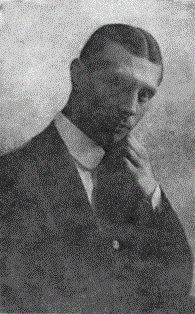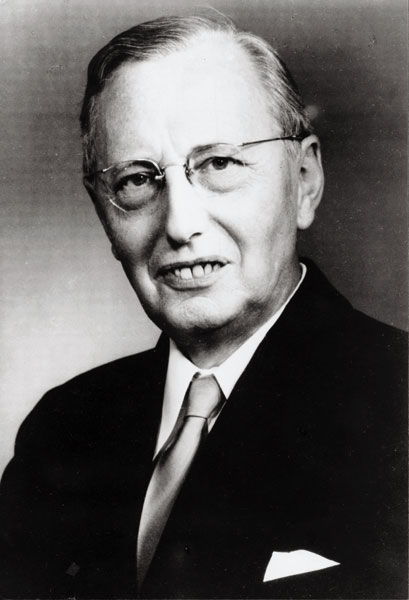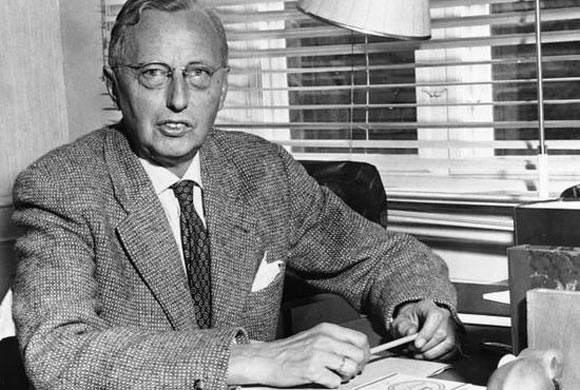<Back to Index>
- Linguist Valentin Nikolaevich Voloshinov, 1895
- Linguist Louis Hjelmslev, 1899
PAGE SPONSOR

Valentin Nikolaevich Voloshinov (Russian: Валенти́н Никола́евич Воло́шинов) (June 18, 1895, St. Petersburg- June 13, 1936, Leningrad) was a Soviet / Russian linguist, whose work has been influential in the field of literary theory and Marxist theory of ideology.
Written in the late 1920s in the USSR, Voloshinov's Marxism and the Philosophy of Language (tr.: Marksizm i Filosofiya Yazyka) attempts to incorporate the field of linguistics into Marxism. The book's main inspiration does not, however, come from previous Marxists, whom Voloshinov saw as largely indifferent towards the study of language. Instead, Voloshinov's theories are built on critical engagement with Wilhelm von Humboldt's concept of language as a continuous creative or 'generative' process, and with the view of language as a sign - system posited by Ferdinand de Saussure. To some extent, Voloshinov's linguistic thought is also mediated by the analyses of his Soviet contemporary Nikolai Marr, and by the work of the Crocean linguist Karl Vossler.
For Voloshinov, language is the medium of ideology, and cannot be separated from ideology. Ideology, however, is not to be understood in the classical Marxist sense as an illusory mental phenomenon which arises as a reflex of a "real" material economic substructure. Language, as a socially constructed sign - system, is what allows consciousness to arise, and is in itself a material reality. Because of this belief that language and human consciousness are closely related, Voloshinov holds that the study of verbal interaction is key to understanding social psychology. Voloshinov further argues for understanding psychological mechanisms within a framework of ideological function in his book Freudianism: A Marxist critique.
It is a mistake, argues Voloshinov, to attempt to study language abstractly and synchronically (i.e., in an unhistorical manner), as Saussure does. Words, for Voloshinov, are dynamic social signs, which take different meanings for different social classes in different historical contexts. The meaning of words is not subject to passive understanding, but includes the active participation of both the speaker (or writer) and hearer (or reader). While every word is a sign taken from an inventory of available signs, the manipulation of the word contained in each speech act or individual utterance is regulated by social relations. In Voloshinov's view, the meaning of verbal signs is the arena of continuous class struggle: a ruling class will try to narrow the meaning of social signs, making them "uni - accentual", but the clash of various class interests in times of social unrest will make clear the "multi - accentuality" of words.
By virtue of his belief that the 'struggle for meaning' coincides with class struggle, Voloshinov's theories have much in common with those of Italian Communist Antonio Gramsci, who shared an interest in linguistics. Voloshinov's work can also be seen to prefigure many of the concerns of poststructuralism.
Voloshinov devotes the last portion of Marxism and the Philosophy of Language to a treatment of reported speech in order to show social and temporal relations between utterances to be integral properties of language. This was taken up by Roman Jakobson in an essay entitled: "Shifters and Verbal Categories," and influenced the development of the Prague School of functional linguistics as well as linguistic anthropology.
Some scholars believe that works bearing Voloshinov's name were actually authored by his colleague Mikhail Bakhtin, although the topic is still the subject of debate; a few of these works have been added to reprinted editions of Bakhtin's collected works.

Louis Hjelmslev (October 3, 1899, Copenhagen - May 30, 1965, Copenhagen) was a Danish linguist whose ideas formed the basis of the Copenhagen School of linguistics. Born into an academic family (his father was the mathematician Johannes Hjelmslev), Hjelmslev studied comparative linguistics in Copenhagen, Prague and Paris (with a.o. Antoine Meillet and Joseph Vendryes). In 1931, he founded the Cercle Linguistique de Copenhague. Together with Hans Jørgen Uldall he developed a structural theory of language which he called glossematics, which developed the semiotic theory of Ferdinand de Saussure. Glossematics as a theory of language is characterized by a high degree of formalism, it is interested only in describing the formal characteristics of language, and a high degree of logical rigor. The theory never became widely influential, but has recently been picked up by post - structuralist philosophers as a possible alternative to the dominant saussurean linguistic paradigm.
The Linguistic Circle of Copenhagen was founded by Hjelmslev and a group of Danish colleagues on 24 September 1931. Their main inspiration was the Prague Linguistic Circle, which had been founded in 1926. It was, in the first place, a forum for discussion of theoretical and methodological problems in linguistics. Initially, their interest lay mainly in developing an alternative concept of the phoneme, but it later developed into a complete theory which was coined glossematics, and was notably influenced by structuralism. Membership of the group grew rapidly and a significant list of publications resulted, including an irregular series of larger works under the name Travaux du Cercle Linguistique de Copenhague. A Bulletin was produced, followed by an international journal for structuralistic research in language, Acta Linguistica (later called Acta Linguistica Hafniensia), which was founded with the members of the Prague Linguistic Circle. It was, at that time, the sole journal explicitly dedicated to structuralism. With one short break from 1934 to 1937, while he lectured at the university of Aarhus, Hjelmslev acted as chairman of the Circle until shortly before his death in 1965.
Hjelmslev published his first paper at the age of 25. His first major book, Principes de grammaire générale, which he finished in 1928, is an invaluable source for anyone interested in Hjelmslev's work. During the 1930s Hjelmslev wrote another book, La catégorie des cas, which was a major contribution to linguistics. In this book, Hjelmslev analyzed the general category of case in detail, providing ample empirical material supporting his hypotheses. It is important to read Hjelmslev's work as a continuous evolving theory on the epistemology of linguistics.
His best known book, Omkring sprogteoriens grundlæggelse, or in English translation, Prolegomena to a Theory of Language, first published in 1943, critiques the then prevailing methodologies in linguistics as being descriptive, even anecdotal, and not systematizing. He proposed a linguistic theory intended to form the basis of a more rational linguistics and a contribution to general epistemology. Like Ferdinand de Saussure (1857 - 1913), he accepted language as a system of signs, from the point of view of language use. He argued that a theory of semiotics should be consistent within itself, comprehensive, and as simple as possible.
Hjelmslev's sign model is a development of Saussure's bilateral sign model. Saussure considered a sign as having two sides, signifier and signified, and also distinguished between form and substance. Hjelmslev's famously renamed signifier and signified as respectively expression plane and content plane. The combinations of the four would distinguish between form of content, form of expression, substance of content, and substance of expression. In Hjelmslev's analysis, a sign is a function between two forms, the content form and the expression form, and this is the starting point of linguistic analysis. However, every sign function is also manifested by two substances: the content substance and the expression substance. The content substance is the psychological and conceptual manifestation of the sign. The expression substance is the material substance wherein a sign is manifested. This substance can be sound, as is the case for most known languages, but it can be any material support whatsoever, for instance, hand movements, as is the case for sign languages, or distinctive marks on a suitable medium as in the many different writing systems of the world.
In short, Hjelmslev was proposing an open-ended, scientific method of analysis as a new semiotics. In proposing this, he was reacting against the conventional view in phonetics that sounds should be the focus of enquiry. Some have interpreted his work as if Hjelmslev argued that no sign can be interpreted unless it is contextualized — treating his functives, expression and content as the general connotative mechanisms (for instance by Algirdas Julius Greimas) -- for Hjelmslev the point of view of the linguist on meaning is that of the form of content. Even if the content substance is important, one has to analyze it from the point of view of the form. Not only do pictures and literature manifest the same organizing principles, but, more broadly, seeing and hearing, though certainly not identical, interact in surprisingly complex ways at deeper levels of the sign hierarchy which Hjelmslev sought to understand.
Hjelmslev made a bold proposal to transform technical analysis into a broad inquiry, emphasizing that the true focus of linguistics should be the language and the human culture that continually reinvents it, and all society's memory of its accumulated knowledge preserved through language. This was a challenging but constructive argument at the time, and remains one that still has relevance today. Most conspicuously, Hjelmslev's lines of inquiry have been taken up by Gilles Deleuze and Félix Guattari (see the "Postulates of Linguistics" and "Geology of Morals" chapters of A Thousand Plateaus), and subsequently their followers.
Hjelmslev introduced the terms glosseme, ceneme, prosodeme and plereme as linguistic units, analogous to phoneme, morpheme etc.
Also, his most famous work, Prolegomena to a Theory of Language, is mostly concerned with the formal definition of a terminology for the analysis of any level of a system of signs, and as such there exists an exclusively Hjelmslevian terminology for that.